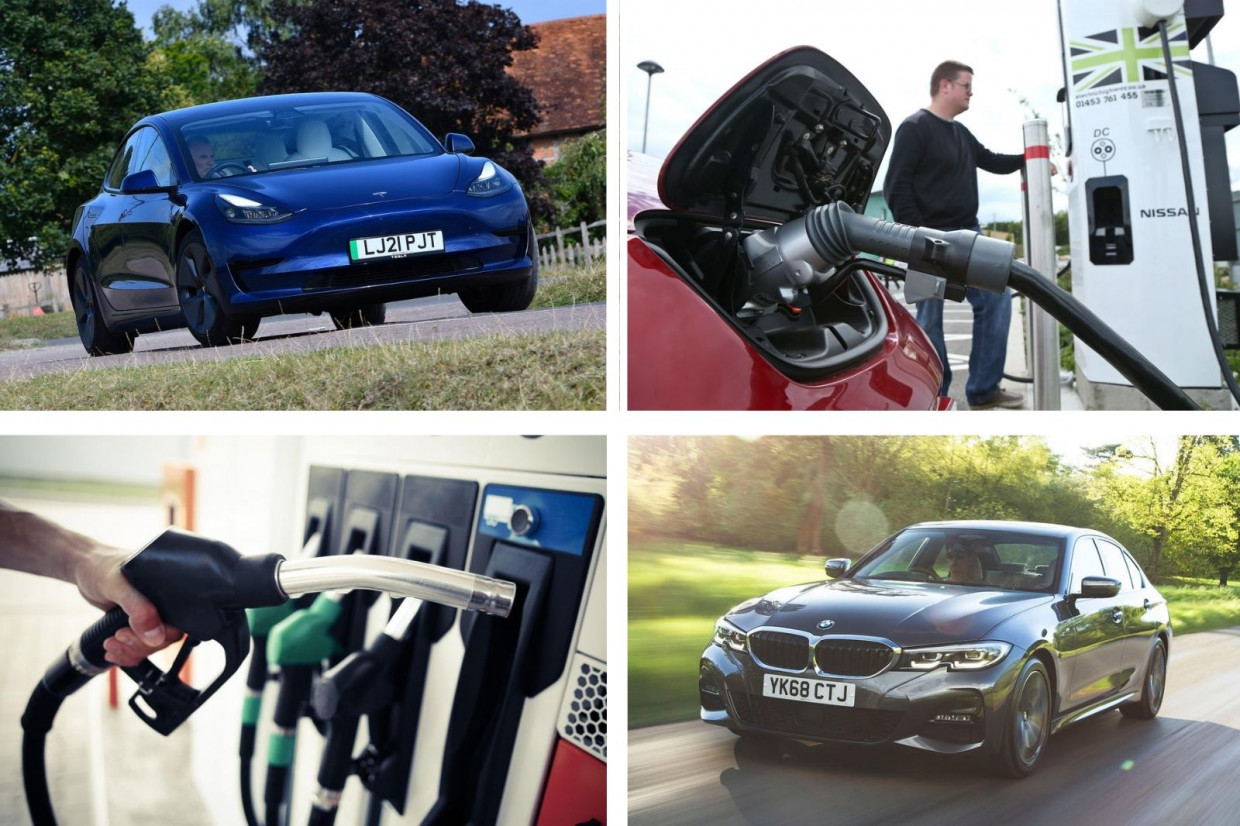
One of the tempting reasons for buying an electric vehicle is the prospect of lower running costs, because as everybody knows, EVs are efficient users of energy. But hang on a minute, who says? Are they really?
The change in terminology when comparing EVs to conventional combustion-engined cars, such as miles per kWh instead of MPG can be frankly bamboozling, so it’s no wonder the jury is still out on EVs for many drivers. And how do EVs measure up compared to other electrical appliances we use in our daily lives and what exactly is energy anyway?

What exactly is energy anyway?
Open a school textbook and it will say something like “energy is the capacity to do work.” Petrol, diesel, and electricity are all “energy carriers” because they all contain energy, which can be converted to another form of energy.
Where EVs are concerned, it’s that ability to convert as much of its electrical energy into the work that propels a car that decides how efficient it is. With petrol and diesel fuel, the same applies and it’s the same again for an electric kettle. How much of the energy a kettle consumes actually ends up in the water it boils?
Petrol vs electric
One thing that’s easy to deal with quickly is the efficiency comparison between EVs and conventional cars, because EVs in general are massively superior.

Combustion engines work by converting fuel into heat, the expanding gases powering the engine. More than half of that heat is wasted and even the very best petrol engine only converts around 40% of the energy in the fuel into work, which means 60% is destined to become waste heat. It’s a sobering thought that for every £10 spent on petrol or diesel, less than £5 is actually contributing to moving the car.
In contrast, an EV’s electric motor converts more than 90% of the electrical energy it consumes into useful work, so its efficiency is more than 90%. Add to that the fact that the electric motor can recover some of the energy it puts into moving the car by generating electricity as it slows, and the efficiency improves still further.
The “gasoline gallon equivalent” (GGE) formula devised by the US National Institute of Standards and Technology in 1994 was designed to compare the energy in petrol with alternative fuels, and it’s a useful way of illustrating the huge gap in efficiency between combustion engines and electric drives.

According to GGE, an Imperial gallon of petrol contains the equivalent energy of just over 40kWh of electricity. That means a typical, middle-of-the-road EV with a 64kWh battery (useable charge) is carrying roughly the same amount of energy as 1.6 gallons of petrol. A 1.5-litre petrol car of about the same size as that EV will optimistically manage 55mpg, so 1.6 gallons of petrol will take it 88 miles. At a realistic 3.7 miles/kWh, the 64kWh EV will travel almost 235 miles. The difference of 148 miles is due to the efficiency of the electric powertrain and the energy recovered by regenerative braking.
Hybrids and plug-in hybrid powertrains improve efficiency in various ways, such as recovering energy through regenerative braking in the right conditions and assisting the efficiency of the combustion engine by allowing it to run in more efficient operating cycles that consume less fuel. Ultimately though, a hybrid’s “prime mover” remains a combustion engine, which is still inefficient compared to an electric powertrain.
How to compare the efficiency of EVs
Comparing the efficiency of one EV with another is more straightforward: simply divide the useable battery size by the range. Our EV with the 64kWh battery (64,000Wh) and a quoted range of 236 miles has an efficiency of 271Wh/mile (0.271kWh/mile). An owner doing the same sums on their own EV’s real world mileage can compare its efficiency with the manufacturer’s claims as well as other makes of EV.

Electric efficiency: an electric car vs a kettle
So how do EVs compare to other things we rely on like household appliances? Kettles are a good example because generally, they have an efficiency of between 80% and 90%. That’s because the heating element in them is 100% efficient (it converts all of the electricity into heat) and the water is in direct contact with it.

Refrigerators, washing machines and tumble driers use brushless motors which have a similar efficiency to an EV motor. That’s ahead of a microwave which, a little like a combustion engine, works in two steps: electricity powers a magnetron to generate microwaves, which in turn heat the food by vibration.
Induction hobs, like kettles and EVs, turn the energy more directly into the “work” of heating a pan by efficient electromagnetic induction. Conventional gas and electric hobs generate radiant heat, much of which is wasted, lost in the surrounding air. Sound familiar?
Jesse Crosse
READ MORE
e-CARS
The 10 electric cars with the longest range
e-BIKES
Desiknio Pinion C1.9 Classic e-bike review
Ride for a worthy cause: Big Issue eBikes launches in Bristol
e-MOTORBIKES
Triumph reveals first electric TE-1 motorbike
BMW CE 04 electric scooter review
e-SCOOTERS
Superpedestrian Link e-scooter: first ride
The new battery tech designed to make e-scooters more sustainable
e-WORLD
New Candela C-8 electric hydrofoil has first 'flight'
Awake Ravik S 22 aims to take electric surfboards to the extreme

